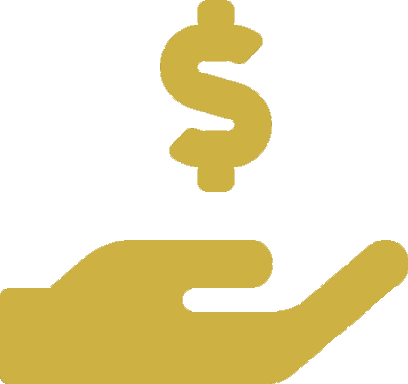Newsletter
July 2025
Turning the Corner
In a previous discussion concerning risk, we pointed out that "When complexity increases, decision-making slows." At that time, the complexity faced by investors was handicapping how de-escalating the ongoing conflict between Russia and Ukraine would impact the combatants as well as the rest of the world.
In hindsight, this now appears to pale in comparison to the economic complexity that was introduced with the announcement of significant tariffs on Liberation Day. Tariffs were broadly imposed on all imports into the United States, and in some cases, stacked on top of additional tariffs on specific countries and industries. Trading partners were urged not to retaliate. Most countries complained loudly without reacting. Two days after the tariffs were announced, China responded by raising the tariffs on goods imported from the United States. Four days later, the United States raised tariffs by an additional 50%, to which China responded by raising its tariffs by 50%. The United States immediately announced another 50% increase, bringing the total levy on Chinese goods to 145% effectively setting up a blockade against Chinese imports. China responded two days later with a 50% increase of their own and a statement that they would ignore further increases. Both sides removed more than a nose in their efforts to spite their face.
The nature of these tariffs and the situation in China presented a considerable long-term economic headwind. Tariffs are a tax on imports. Taxation generally results in less of whatever activity is being taxed. As a country that consistently runs large trade deficits, importing fewer goods is likely to reduce aggregate economic activity. There is an old saying that when the United States sneezes, the rest of the world catches a cold. Slowdowns in the United States generally result in a sharper slowdown around the globe, and this soft patch was no different. As the effective trade embargo persisted, global supply chains came to a screeching halt, and worries began to emerge about the ultimate economic impact. After nearly a month, a real debate emerged over who would blink first; the United States, facing empty shelves at Walmart, or China, facing a revolt of workers sent home from factories.
The negative impacts of reduced economic activity in the United States were compounded by a simultaneous increase in complexity faced by businesses and consumers. The tariff announcement effectively kicked off a trade war with our largest trading partner. The globalization of supply chains over the past several decades made it so that nearly no company was immune. For managers of businesses, defining the problem was relatively easy, developing durable solutions - not so much. How long would the tariffs be in place? Might they be repealed? Should they move operations to lower-tariff countries? With complexity having increased dramatically and no real visibility on when certainty would return, many were relegated to sitting on their hands. The fog of war surrounding them was too great. Each possible action had too many potential outcomes that were unanalyzable. On May 12, after several days of meetings, the United States and China agreed to reduce tariffs by 115%. This reset the rates at a "manageable" 30% on imports of Chinese goods and 10% on imports of American products from China.
This collective slowdown weighed on the global economy, but it also highlighted several industries that are currently immune to macroeconomic forces. These industries, namely commercial aerospace and artificial intelligence, both have grown this year and represent choices that investors could make despite being surrounded by uncertainty. Commercial aerospace is perceived as a growth cyclical. The business does have ups and downs, but is believed to reach higher highs and higher lows over time. The industry was artificially constrained for several years by the inability of Boeing to deliver airplanes safely and on time.
The restrained supply of new airplanes has been exacerbated by issues with engines previously delivered by Pratt & Whitney. This combination has resulted in an insatiable demand from airplane owners to refurbish existing engines, all while Boeing is increasing production, which requires new engines to be built. Suppliers in this industry are staring at an unlimited current demand that increasingly appears durable. With this setup, managers in this industry can and have looked through the fog of war to invest more capital in their businesses. Investors have followed suit, raising valuations in this segment of the market considerably. Eventually, the industry will reach cruising altitude, and growth will dissipate, but for the time being, it is all systems go.
The other industry that is seeing insatiable demand is artificial intelligence (AI). The race to develop AI models, build out data centers to run these models, and finally to produce business use cases is an all-out sprint. Estimates of capital spending required by the industry have settled into the $5-$7 trillion range over the next decade. The scale of this endeavor, as currently described, is monumental, and the cost of not participating for the largest technology companies is potentially becoming a buggy whip manufacturer. This industry is perceived to be a secular growth industry—it is a growing tree, and where the tree meets the sky is currently unknown, but we know it will be higher than it is today!! With the cost of not participating potentially being fatal, it is easy for managers in these businesses to continue investing through any economic turmoil.
While we know there are a finite number of planes that the world will want over time, the allure of a secular growth industry like AI is that the potential size of the pie is currently bounded only by one's imagination. It is unlikely that demand, pricing, and capital available will prove limitless. When the cost of failure is irrelevance and the reward of success is unlimited, each business is incentivized to overcapitalize its opportunities in this industry. Eventually, the companies will collectively succeed in putting too much capital to work and seeing returns fall sharply. Until then, it is fully game on in this industry.
Growth in capital spending has been concentrated in industries with unlimited demand over the past several quarters, primarily due to the significant increase in uncertainty related to tariffs and fiscal policy. The reduction in capital investment across other industries will provide fuel for an expanded recovery as uncertainty is removed. The normal circumstance for consumers, businesses, and economies is to grow. In the absence of growth, they tend to stagnate. The period of heightened uncertainty that consumers and businesses have experienced over the past several quarters is leading to pent-up demand for consumption and investment. As the clouds of uncertainty that have hovered over our economy begin to dissipate, consumers and businesses are likely to rediscover a world that is less new than it appears today. This realization should result in consumption and investment once again reaccelerating. This broadening of growth should lead to more industries participating in capital investment, resulting in equity markets that disperse returns more evenly across sectors, industries, and specific companies.
We have written for some time about embracing volatility and positioning portfolios for the long term. We have also noted that regarding equity portfolios, "we would expect to find opportunities in that choppiness to exit some positions that have reached full value while also investing in new ideas that will benefit from a refreshed and extended economic cycle." We have taken advantage of this recent stretch of choppiness to reposition portfolios. With uncertainty beginning to lift and the macro environment turning the corner, we continue to believe that over any reasonable timeframe, the economy and earnings will grow, enabling equity markets to broaden and move higher.
As always, if you have any questions or simply want to catch up, please give us a call.




